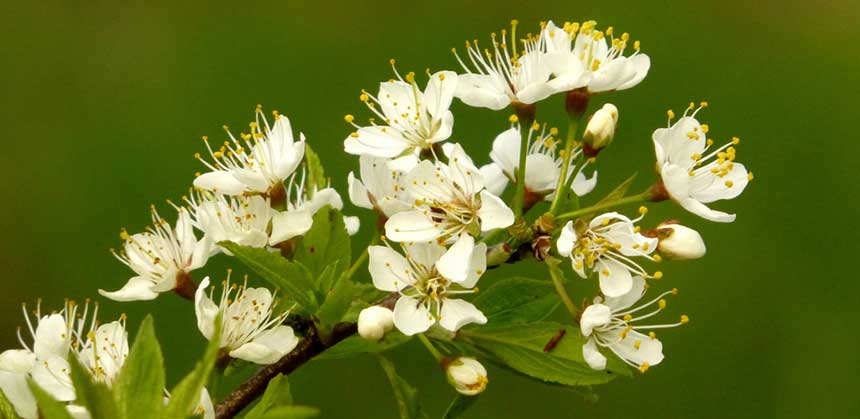Stopping to smell (and eat) the flowers

Hawthorn in bloom at the Guelph Arboretum. The flowers are good for the soul and may strengthen cardiac muscle, too. Photo: Lesley Wilson, Creative Commons, some rights reserved
It’s well known that stopping to smell the flowers, both in a literal and figurative sense, can help reduce stress and lower blood pressure. Taking a moment to be fully present and appreciate life — and to take a whiff of whatever might be in bloom nearby — is good for the heart. What’s not as widely known is that stopping to eat certain flowers could also benefit your cardiac muscle.
Due to the delayed spring, many trees and shrubs are a little behind their typical bloom schedule, and everyone (everyone who is a flowering woody plant at least) is in a hurry to bust out with flowers. The serviceberry (juneberry) is barely done flowering in some upland locations, and our native black cherries are in bloom, though their small grape-like clusters of mini-blossoms are less showy than those of domestic cherries. Apples, wild and cultivated, are in most cases replete with white blossoms.
A tree only makes flower buds in late summer of the previous year, and the amount generally reflects the condition of the tree at that time. Vegetative buds are also set the previous summer. However, if these are damaged by weather or insects in springtime, a tree can release dormant buds under its bark to make new leaves. This is why a late freeze that destroys tree buds may put an end to a season’s fruit crop but it won’t kill the trees.
Another wild tree, a cousin to apple, will flower through the end of May. Fence rows and pastures are festooned with the brilliant white blossoms of hawthorn, a small tree in the rose family native to North America. There are many species of hawthorns, and they would be more popular if they didn’t sport long thorns tough enough to puncture tires. Hawthorn fruit, sometimes called thorn apples or haw apples, are good for making jelly — I make some most every fall — and at times were an important food source for pioneers. The wood is quite strong and hard.
But it’s the fragrant and attractive hawthorn flowers that have a rich history of medicinal use as cardiac tonic. Hawthorn flowers, along with its leaves, are often dried, powdered, and made into capsules, or sometimes used for tea. Native healers and others who use herbal remedies have often been doubted, but in many cases they end up supported by science. Ginkgo and St. John’s Wort are two examples of traditional medicine vindicated by research.
Although hawthorn hasn’t been endorsed by the American Medical Association yet, several studies have shown hawthorn has beneficial cardiac effects. An article in the July 2002 issue of the Journal of Cardiovascular Nursing stated that hawthorn “…consistently demonstrates its ability to improve exercise tolerance and symptoms of mild to moderate heart failure.” However, the authors admit, “In order to properly use hawthorn in the treatment of heart failure, a large, controlled, multi-center trial… is needed.”
Given hawthorn’s abundance, if it is proven to be beneficial it could be practically free. Which leads to the question of who exactly would fund such studies.
If you can find the time, consider going for a walk this week to smell some hawthorn flowers. If you want to try any, please check with a licensed medical practitioner first. And do watch out for those thorns.
Paul Hetzler is a horticulture and natural resources educator with Cornell Cooperative Extension of St. Lawrence County.







